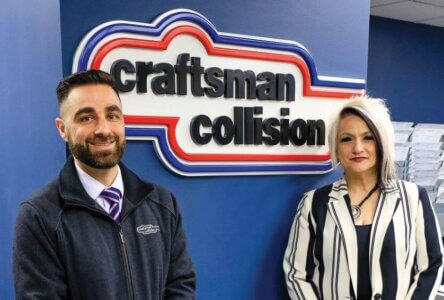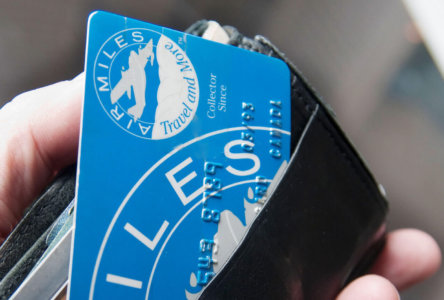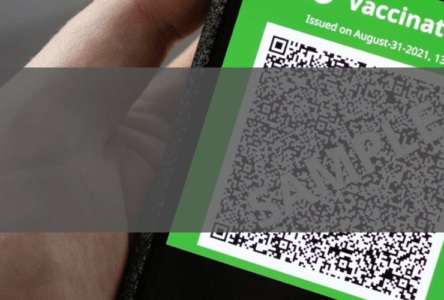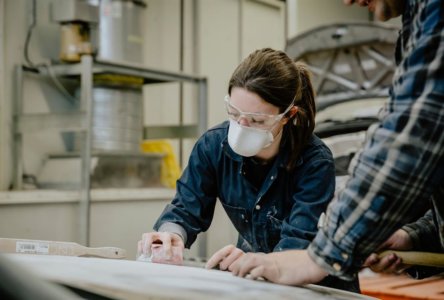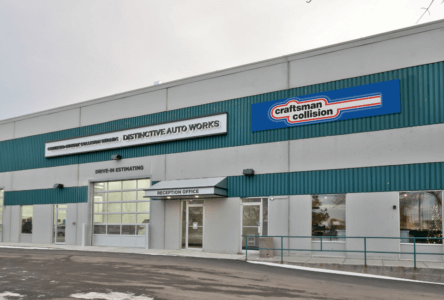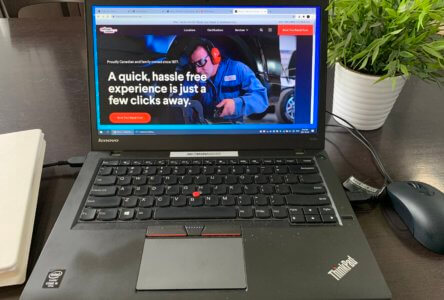Craftsman Collision takes a significant step towards reducing the industry’s contribution to plastic waste by implementing the first large-scale plastic recycling program in British Columbia.
While the automotive industry is known for being a major contributor to global pollution due to its high levels of carbon dioxide emissions, there is another aspect of the industry’s impact on the environment that often goes overlooked: plastic waste. In fact, the automotive industry in Canada is the second largest producer of plastic waste after plastic packaging, with 309 kilotonnes (681 million pounds) of plastic waste annually.
Plastic waste in the automotive industry
On average, plastic accounts for about 50% of a car’s volume and about 10% by weight. Moreover, as auto manufacturers continue to use more plastic parts to keep vehicles lightweight for fuel efficiency, the volume and mass of plastics in new cars, including electric vehicles, are expected to increase by at least 15% by 2030.
Currently, there is almost no documented recycling of plastic automotive parts, which means that the plastic materials in cars most likely end up in landfills, including those from end-of-life vehicles (ELVs). When cars reach the end of their useful life, automotive recyclers collect parts and materials with additional value and process the rest of the vehicle as automotive shredder residue (ASR), which ultimately goes to landfill. Unlike metals, which provide additional incentive for collection due to their higher value, plastics are not as in demand due to their low value and the difficulty involved with recovering them, thus they become waste. While many automotive parts are harvested and re-used, the plastics recovery in these parts is not yet recognized.
The collision repair industry also contributes significantly to plastic waste, with over 700 automotive collisions occurring in British Columbia daily. When auto parts are replaced during repairs, these old parts inevitably end up in landfills. Considering Insurance Corporation of British Columbia’s (ICBC’s) insurance claims only, there are close to 80,000 bumper covers replaced annually, both front and rear.(8) This number excludes private replacements.
Craftsman Collision’s Plastic Recycling Program
As the largest chain of auto body shops in western Canada, Craftsman Collision recognized that it produces a substantial amount of automotive scrap plastics resulting from parts replacement. Committed to sustainable business practices, the company proactively addressed the issue by launching its own plastic recycling program in 2019, making Craftsman Collision the first auto body chain in British Columbia to adopt such a program on a large scale.
This initiative was spearheaded by the company’s Real Estate Manager, Shant Mensurian, who found a suitable partner with the necessary expertise and technology required to properly recycle plastic auto parts at Reclaim Plastics, a plastic recycling company located in Burnaby, B.C.
“The automotive industry in Canada is the second largest producer of plastic waste after plastic packaging.”
Since 2019, 27 Craftsman Collision shops in the Lower Mainland and Vancouver Island have participated in the program, collecting 258,000 pounds of plastic bumpers. “To visualize it, these plastic parts would fill the equivalent of 14 NHL-sized hockey rinks,” said Craftsman Collision’s Health, Safety, and Environment Manager, Cherryl Feddema, who helped build the program. Of the material collected, 93% has been diverted from the landfill and recycled by Reclaim Plastics.
Thanks to comprehensive data collection and analysis efforts, Craftsman Collision and Reclaim Plastics were able to evaluate the program’s efficacy and the company’s impact on the environment. Mensurian noted that “When you put [the waste] into a dumpster to take it to the landfill, surely the tipper will weigh that bin, but you don’t know what is actually in it, and you don’t know the percentages [of plastic waste].” However, after three and a half years of running this recycling program, Craftsman Collision has generated a lot of valuable data.
Based on the average annual waste production of each Craftsman Collision shop, and taking into account the total number of body shops in the province, Mensurian and Feddema have calculated that every year, approximately five million pounds of plastic bumpers go to the dump in British Columbia, not including all the scrapped cars that are processed by automotive recyclers.
“This is a massive amount of waste that this industry generates that we’re not paying attention to, and it’s low-hanging fruit to get at and work with because most of the plastics in the industry are recyclable,” said Mensurian. However, the main problem with automotive parts recycling is in finding the right solution. Body shops generally want to do the right thing and divert as much plastic waste as possible, but the process is too expensive, especially for small independent businesses.”
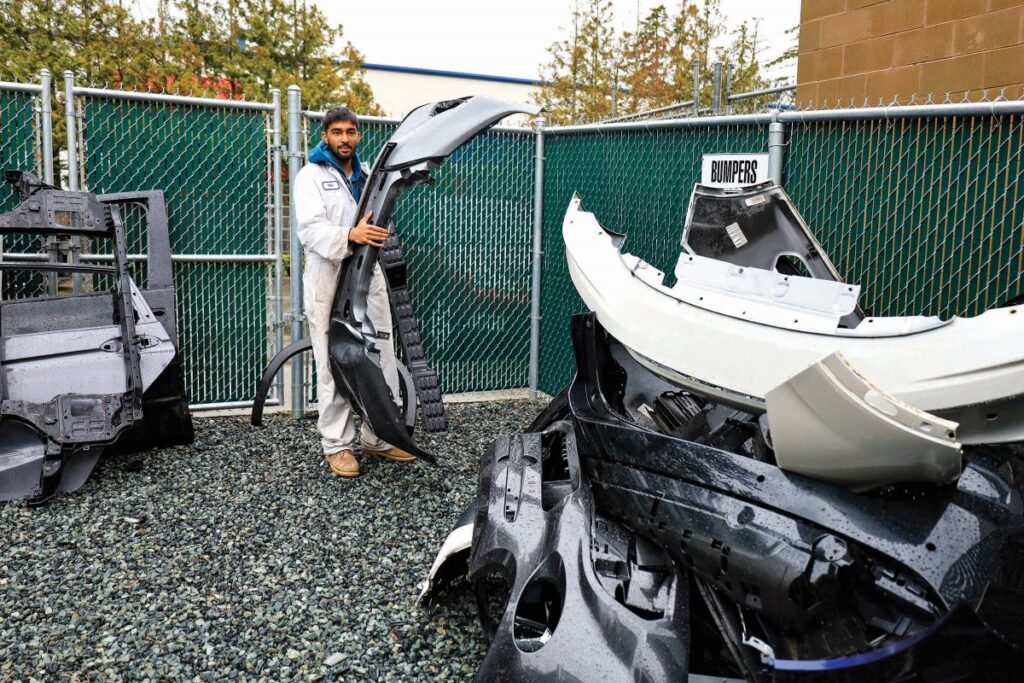
At present, body shops in British Columbia, and elsewhere in Canada, must bear all the expenses related to recycling plastic auto parts, which is also the case for Craftsman Collision. However, this is not the case for recycling scrap tires, for instance, where an Advance Disposal Fee is imposed to support recycling. The fee is levied by retailers and passed on to Tire Stewardship BC (TSBC), a non-profit organization that is responsible for collecting, processing, and environmentally disposing of scrap tires. However, there is no such fee or subsidy program for plastic bumpers or any other plastic auto parts. Neither customers nor insurance companies are charged, and there is no government funding available to help cover the costs of recycling or the safe disposal of hazardous materials.
For years Craftsman Collision has been implementing different sustainable measures in its operations. Taking responsibility for its plastic waste is yet another big step that emphasizes the company’s strong commitment to sustainability. In addition to having a plastic recycling program in place at their 27 locations, Craftsman Collision is also running a trial program in their shop in Richmond, B.C., to assess cost-efficiencies.“
Our objective is to get up to 90 to 95% of our operational waste being recycled,” Mensurian said. “With the beta program, we’re recycling packaging, wrapping, things like Styrofoam, paint cans, wire harnesses, and aluminum cans. We’re hoping that we’re going to get much closer to our [recycling] goal. So far it seems to be working well. The shop [in Richmond] has been on board, the staff are on board, and we have some good engagement. The hope is that once that’s set, we will roll this [recycling program] out to every other shop that we have.”nt solutions for recycling additional waste items.
“To have any value in the marketplace,polymers in the auto sector need to be separated by chemical group.”
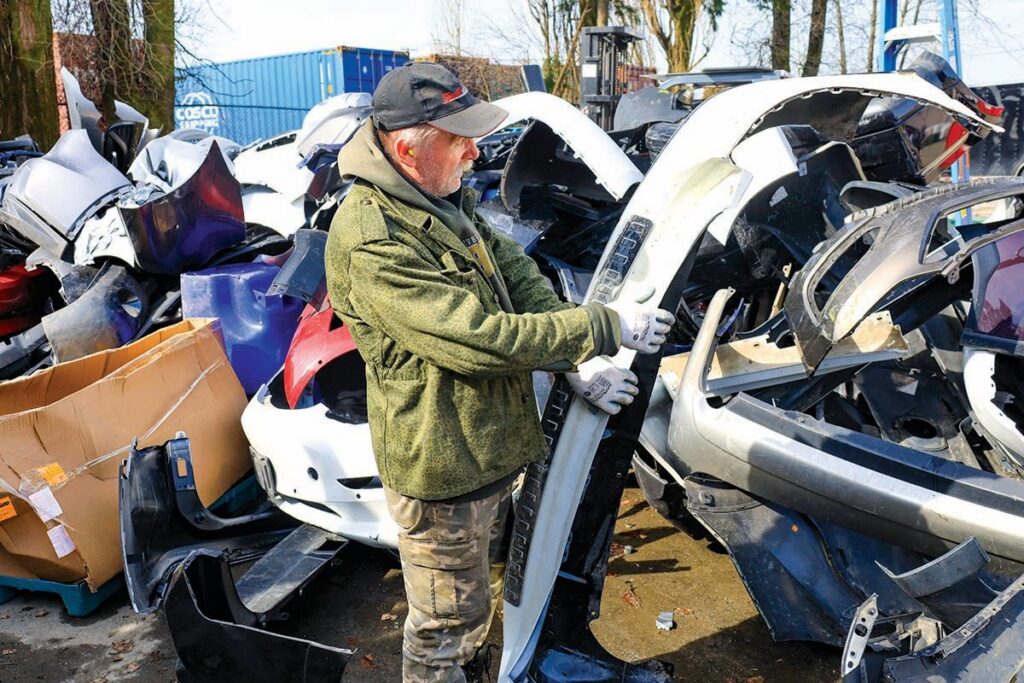
While one limitation to expansion is the cost, which includes the expense of collecting bumpers and other plastic parts from more geographically remote locations, another limitation is space. Since plastic bumpers are no longer disposed of in dumpsters, each location must have a designated and clean space to store all their plastic parts until they are picked up. Finding that space, however, might be challenging for certain locations.
When plastic scrap items are brought to Reclaim Plastics’ facility in Burnaby, they are sorted and decontaminated, which means that they are stripped of incompatible plastics and other materials. As Al Boflo, co-founder of Reclaim Plastics, demonstrated for the benefit of Collision Quarterly, once the plastic material is separated, sorted by polymers, and decontaminated, it is fed into the shredder and granulator to create a clean regrind flake. The large boxes with granulated flakes are then shipped to Reclaim Plastics’ local industry partners, who blend and pelletize them. This material is subsequently brought back into a manufactured process, and used to create new, recycled products, such as piping, pallets, or planters.
“Most of the plastics can be recycled, but the challenging thing is separation.”
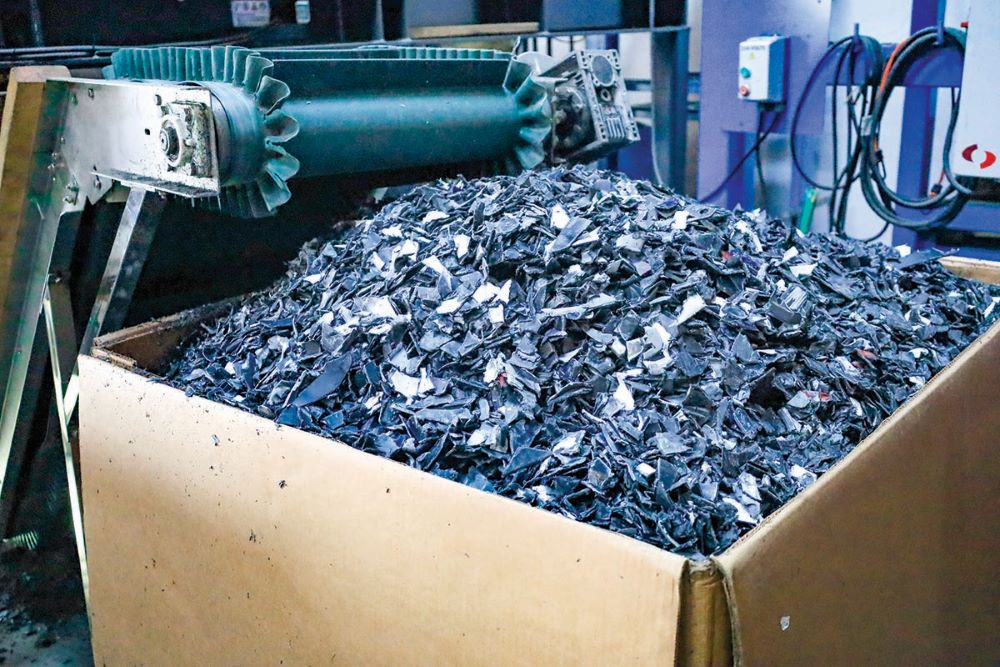
Barriers to Plastic Auto Parts Recycling
Despite Canada-wide efforts to achieve zero plastic waste by 2030, there have not been any cost-effective or complex solutions to address the recycling of auto parts to this day. In 2022, the Automotive Recyclers of Canada (ARC) published a roadmap with a three-year research program for Environment & Climate Change Canada (ECCC) to investigate current practices pertaining to the recovery of auto plastics from end-of-life vehicles. In its Roadmap to Increase Recycling of Auto Plastics from End-of-Life Vehicles in Canada, ARC looked at the issue from the perspective of auto recycling facilities and identified three main barriers to the reuse and recycling of automotive plastics: economic, technical, and regulatory/institutional.
The high cost of collecting, transporting, processing, cleaning, and pelletizing recycled plastics presents a significant economic barrier compared to the low-cost disposal of plastic waste. This challenge is common across industries in most of North America. Years ago, Metro Vancouver classified auto parts and bodies as “banned hazardous and operational impact materials” under its Tipping Fee Bylaw to divert plastic waste from landfills. However, this ban, enforced in Metro Vancouver and City of Vancouver disposal facilities, only puts the automotive industry in a difficult position. As Mensurian explained, “The penalty isn’t prohibitive, as it is often far less than the cost of recycling. This is a good thing because a high penalty would be very detrimental to businesses in an unjustified way, as there are not many options available.”
In addition to financial barriers, the industry faces technical challenges, including automotive plastic contamination and separation. According to Boflo, “There are different types of plastics used within cars, including polypropylene, polyethylene, polycarbonate, TPO [thermoplastic polyolefin], PVC [polyvinyl chloride], and ABS [acrylonitrile butadiene styrene]. Most of these plastics can be recycled, but the challenging thing is separation. Even something as seemingly simple as a bumper might have three different types of plastics.”
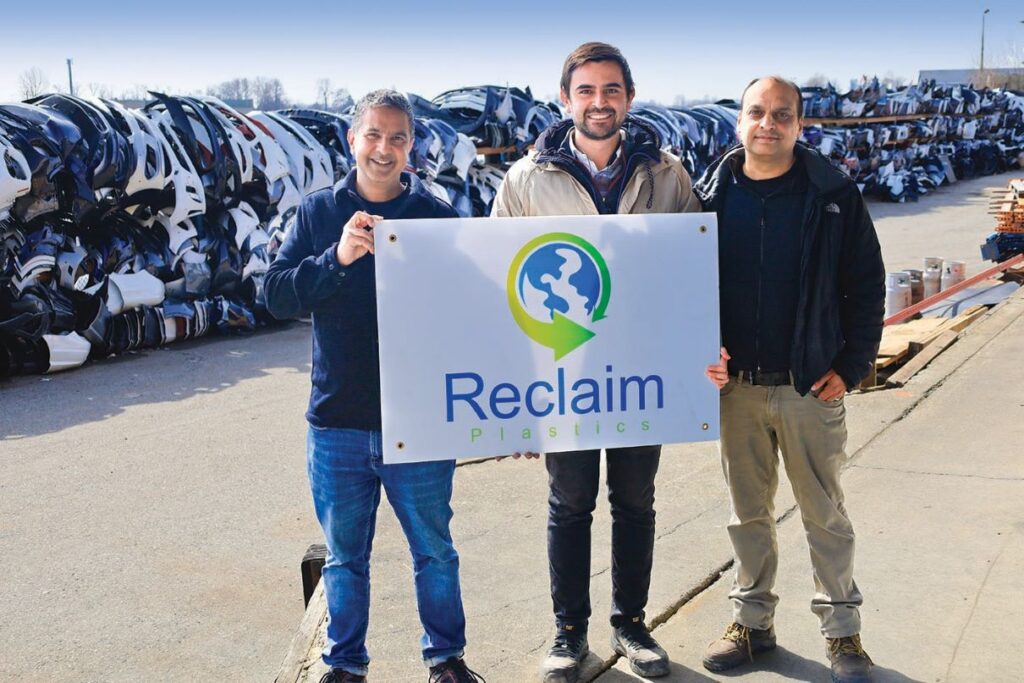
In the case of a TPO bumper, for example, contaminants may include metal clips or sensor brackets made from different polymers, or chrome molding on a grill piece. “We’re working to separate out those main components, but at the same time we need to clean and decontaminate them,” said Boflo. To have any value in the marketplace, polymers in the auto sector need to be separated by chemical group because mixed plastic recyclates have limited and low value.
Finally, there is a lack of regulatory pressure and coordinated effort from the auto industry to reduce, reuse, and recycle plastic waste. Governments, auto manufacturers, insurance companies, collision repair centres, dismantlers, and auto shredders have not yet prioritized this issue. As Steve Fletcher, managing director of the Automotive Recyclers of Canada (ARC), explained, recycling plastic auto parts is currently at a standstill because there is no champion leading these efforts.
“There is this gap, a lack of awareness,” said Fletcher. “Somebody needs to take ownership of this all and get people [from different industry sectors] talking. There are grassroots projects happening across Canada, so why don’t we put them together? It would give us some leverage to go to the government.” Fletcher emphasized that the industry needs to take a collaborative effort to address this issue and move forward. “Everybody needs to take steps in the right direction and identify things that could and should happen,” said Fletcher.
In closing
Change cannot happen without awareness. The lack of plastic auto parts recycling and their harmful impact on the environment has been a long-standing concern, and addressing it requires collaboration from all industry stakeholders. While some initiatives, such as ARC’s roadmap and Deloitte’s economics study, aim to shed light on this issue, we are still in the data collection stage to raise awareness.
Since there is currently no government-mandated support, the responsibility for sustainability efforts, as well as the financial burden, rests with industry leaders like Craftsman Collision, which recognizes the importance of sustainable operations for its long-term success. By taking a leadership role in promoting sustainable practices and raising awareness of the issue, Craftsman Collision has set a positive example for other industry leaders to follow suit. Hopefully, this initiative will spark a much-needed conversation about the issue and bring stakeholders together to find viable solutions.
Cover photo: Shant Mensurian and Cherryl Feddema are the driving forces behind Craftsman Collision’s auto recycling program. (8) On March 8, 2023, ICBC’s Senior Information Officer, Antonio Moura Neto, reported that in 2021 the Corporation removed and replaced a total of 79,577 bumper covers (front and rear combined).
By Iva Kestrankova. Publisher at Automotive Retailers Publishing
